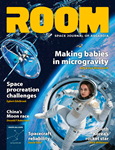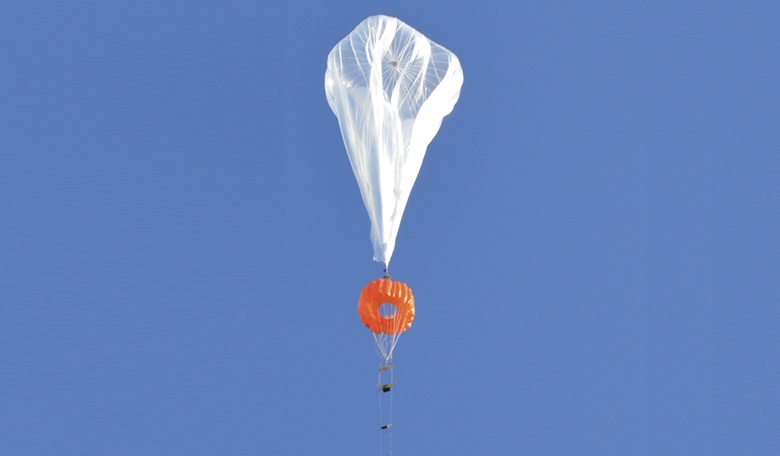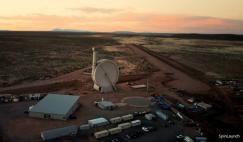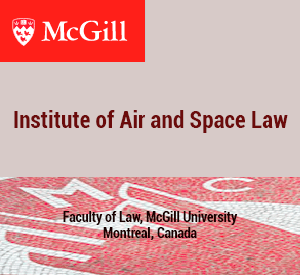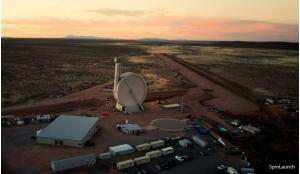The space industry is experiencing a period of rapid transformation. Once the domain of large national programmes and heavy infrastructure, it is now shaped by agile companies bringing innovative technologies and alternative approaches. Among these, B2Space is advancing efforts to make access to near space more affordable, sustainable and flexible.
Founded in 2016 by a team of aerospace engineers and business leaders, B2Space was established to explore scalable systems for addressing long-standing challenges in Earth observation, communications, defence and environmental monitoring. With headquarters in Newport, Wales, and an office in Burgos, Spain, the company has grown from a technical start-up into a multidisciplinary provider of high-altitude solutions within the space value chain.
B2Space’s initial focus was the development of a small satellite launcher using balloon technology. This work laid the technical foundations in high-altitude balloon systems, atmospheric modelling and payload integration. In response to emerging market demands and building on its earlier expertise, the company shifted towards offering services in High-Altitude Pseudo Satellites (HAPS) and Near Space Testing (NST).
Stratospheric platforms operating at altitudes of 20-30 km offer a compelling alternative to both satellites and drones. In contrast to traditional orbital systems, they are less expensive to deploy and more easily recovered or reconfigured. And unlike aircraft or UAVs, they provide extended endurance and wide-area coverage. B2Space’s balloon-based systems aim to bridge this gap by offering reusable, agile and rapidly deployable solutions.
Among the advantages this approach offers are:
- Cost efficiency and areusability: balloon-based launches lower operational costs by more than 60 percent compared to LEO alternatives for similar payloads.
- Customisation and agility: payloads can include multispectral sensors, telecommunications relays, or onboard AI processors, adaptable for short- or long-duration missions.
- Operational flexibility: systems can be launched from remote or mobile sites with minimal infrastructure, supporting applications such as environmental monitoring, border surveillance or emergency telecoms.
- Environmental responsibility: platforms are built using recyclable materials and designed with clean recovery protocols in mind.
These attributes have enabled B2Space to support a mix of governmental and commercial customers across sectors including ISR (intelligence, surveillance and reconnaissance), Earth observation and secure communications.
B2Space’s current activities are organised across three core service lines, all leveraging high-altitude balloon technology.
Near Space Testing (NST)
This provides a stratospheric testbed for the qualification of space technologies under conditions that simulate those in low Earth orbit (LEO) – such as UV exposure, low pressure and extreme temperatures. Payload testing covers cameras, thermal control systems and attitude-related subsystems.
B2Space’s pressurised gondolas, standardised interfaces and rapid integration protocols enable testing within one to two weeks – at a fraction of the cost of orbital alternatives. Clients include universities, startups, ESA and commercial satellite operators. A transition toward a “qualification-as-a-service” model is underway, with flight campaigns and long-term collaborations expanding across Europe.
This service line was conceived to provide an accessible stratospheric environment for the validation of space technologies. By replicating key conditions found in LEO – such as low pressure, UV radiation, and extreme cold – NST offers a cost-conscious and technically viable alternative to in-orbit testing.
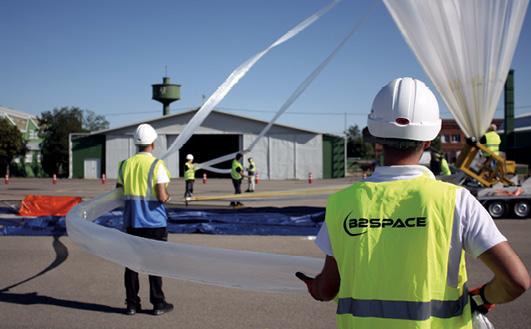 B2Space launching a stratospheric balloon from the military airfield of León, France, in September 2024.
B2Space launching a stratospheric balloon from the military airfield of León, France, in September 2024.
High-Altitude Drop Testing
Designed for validation of re-entry and recovery systems, which involves drop tests from 25-35 km altitude. It supports testing of heat shields, aerodynamic decelerators, parachutes and structural integrity during terminal descent. The ability to repeat tests with high control over drop parameters makes this a practical option for micro-launcher developers and capsule recovery projects, particularly in Europe.
Operational HAPS
B2Space’s HAPS platform has been developed to deliver consistent Earth observation and tactical communications from altitudes above 18 km. Capable of carrying thermal, multispectral, hyperspectral and lightweight radar sensors, these platforms integrate predictive navigation, altitude control and onboard AI processing, offering end-to-end deployment within 48 hours.
Field trials in the UK and Spain have demonstrated use cases in maritime surveillance, backup communications networks and emergency response.
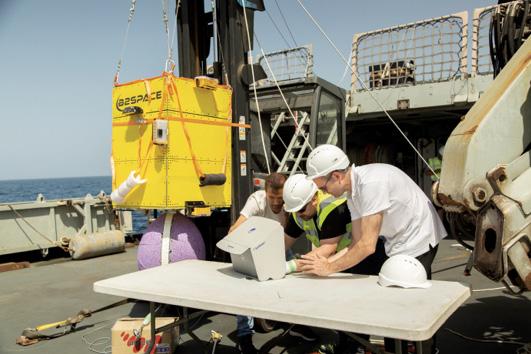 Preparation of a stratospheric balloon during an ocean launch from a ship.
Preparation of a stratospheric balloon during an ocean launch from a ship.
Evolving ambitions
Looking ahead, B2Space aims to play a leading role in hybrid space architectures that integrate terrestrial, aerial, stratospheric and orbital layers, focusing on Long-Endurance Platforms and Data-as-a-Service.
For the former, development is ongoing for solar-powered systems capable of altitude control and multi-week missions – opening new opportunities in wildfire monitoring, rural broadband, and persistent ISR. With Data-as-a-Service, B2Space is working toward recurring service models in data acquisition and analytics, targeting sectors such as agriculture, insurance, energy and national security.
This third strategic pillar is the evolution of B2Space’s stratospheric capabilities, now focused on delivering persistent operational services in Earth observation and tactical communications for both civil and defence markets. The company’s balloon-based HAPS platforms operate above 18 km, offering broad-area coverage that overcomes satellite limitations (cloud cover, revisit frequency) and UAV constraints (range, endurance).
B2Space’s modular platform includes altitude control, predictive navigation and semi-stationary operation, which have been validated in multiple real-world scenarios. Payloads include multispectral, thermal, hyperspectral and lightweight radar sensors, as well as onboard AI analytics for real-time alerting, and hybrid communications (satcom + RF) with redundancy.
Multiple test flights in Spain and the UK have demonstrated the platform’s capacity for thermal observation and persistent communications. The platform is currently being tailored to institutional and defence applications such as maritime surveillance, emergency telecoms and backup networks.
Europe’s space ecosystem
As space becomes more accessible, collaboration across the value chain is becoming essential. B2Space contributes by offering services that support satellite development, payload validation and emerging launch technologies.
Near-space testing allows satellite developers to evaluate instruments in realistic atmospheric conditions, reducing risk before orbital deployment. Similarly, the drop-test platform has enabled European companies and research centres to simulate critical re-entry phases – supporting efforts around capsule recovery, reusable stages and retro-propulsion validation.
Through these efforts, B2Space supports broader European ambitions in developing sustainable, responsive and cost-effective space infrastructure.
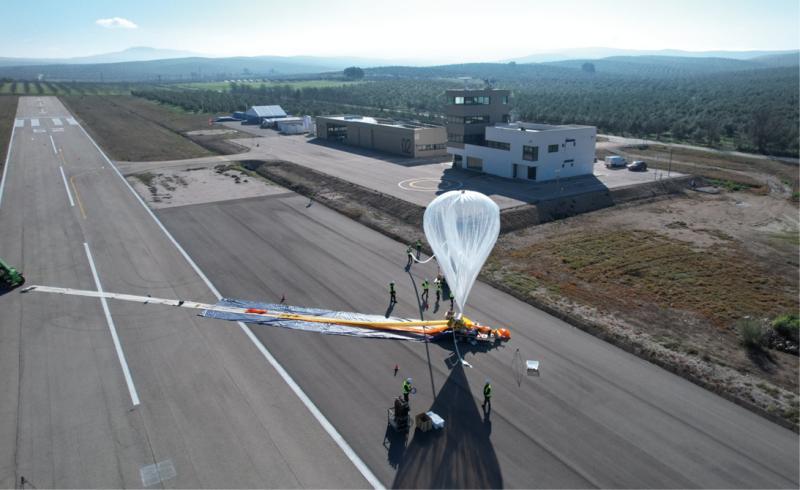 The goal is not simply to innovate, but to enable meaningful applications – from environmental resilience to national security – at stratospheric altitudes
The goal is not simply to innovate, but to enable meaningful applications – from environmental resilience to national security – at stratospheric altitudes
Final thoughts
B2Space combines technical development with a focus on real-world applications, aiming to meet both commercial and institutional needs. The ability to iterate quickly, control the full mission lifecycle and offer tailored, flexible services has shaped its growth. The goal is not simply to innovate, but to enable meaningful applications – from environmental resilience to national security – at stratospheric altitudes.
Editor’s note
Industry promotional articles such as this can be a useful marketing tool and are normally published in ROOM Space Journal for a small fee. Please contact the Editor-in-Chief (details on the inside back cover) for further information about opportunities in our Spring 2026 issue.
About the author
Julio Verdasco, Business Director at B2Space, a Computer Engineer with over 20 years of experience in the digital world. Skilled in management, leadership and business development across industries such as Space, HAPS, Telecom, Aerospace, Railway, Automotive and Retail. MIT-certified in Data Science & Big Data Analytics and Machine Learning, combining strategic vision with advanced technical expertise to drive innovative and high-impact projects.


